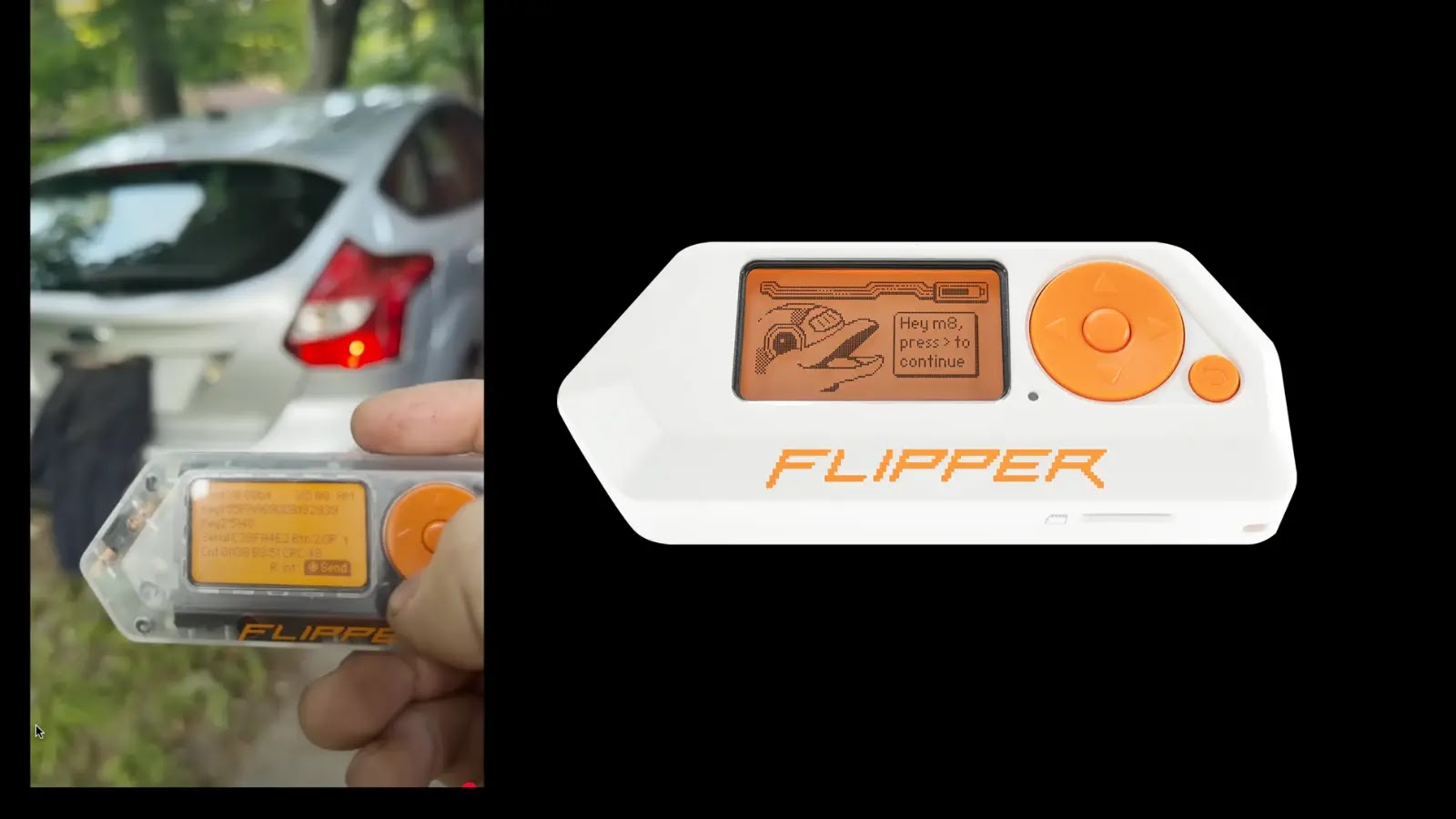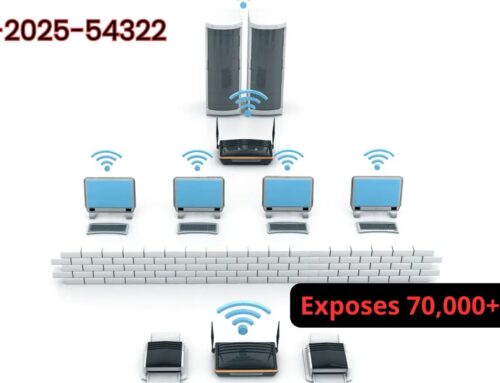
Flipper Zero ‘DarkWeb’ Firmware Bypasses Rolling Code Security on Major Vehicle Brands
Imagine this unsettling scenario: you step away from your vehicle for mere moments, confident in its security, only to return and find it gone. This isn’t the plot of a Hollywood thriller, but a looming threat intensified by a new development in the world of vehicle security. A custom firmware for the popular Flipper Zero multi-tool device is reportedly bypassing the advanced rolling code security systems that guard most modern vehicles, putting millions of cars at significant risk of theft.
Recent demonstrations by the YouTube channel “Talking Sasquach” highlight the alarming capabilities of this custom firmware, which is rumored to be circulating on dark web forums. The implications are profound, potentially neutralizing a cornerstone of modern automotive anti-theft measures. As cybersecurity professionals, understanding and addressing this evolving threat is paramount.
The Flipper Zero: A Versatile Tool with a Dark Side
The Flipper Zero emerged as a highly popular, portable multi-tool for pentesters, hardware enthusiasts, and tinkerers. Its compact size belies its powerful capabilities, including:
-
Sub-1 GHz Transceiver:
Used for interacting with garage doors, IoT devices, and car key fobs.
-
NFC/RFID Reader:
For analyzing access cards, security tags, and other RFID/NFC-enabled systems.
-
Infrared Transceiver:
Capable of controlling TVs, air conditioners, and other IR-controlled devices.
-
GPIO Pins:
For hardware debugging and custom circuit interaction.
-
USB-C Connectivity:
For data transfer and firmware updates.
While designed for legitimate security research and exploration, the Flipper Zero’s accessibility and versatility make it an attractive platform for malicious actors. Its ability to intercept and replay radio signals is precisely what the new ‘DarkWeb’ firmware exploits to undermine rolling code security.
Understanding Rolling Code Security
Rolling code, also known as “hopping code,” is a security feature designed to prevent vehicle theft by making it extremely difficult to capture and replay a key fob’s signal. Unlike older fixed-code systems where the same signal is sent every time, rolling code systems generate a new, unique code with each press of the key fob button. This is achieved through a synchronized pseudo-random number generator (PRNG) within both the key fob and the vehicle’s receiver.
Here’s a simplified breakdown:
- When you press the key fob, it generates a new code and transmits it.
- The vehicle’s receiver expects a code within a specific, synchronized sequence.
- If the received code matches the next expected code in its sequence, the vehicle unlocks (or locks), and both the key fob and the car advance their internal sequence counters.
This sophisticated synchronization is what the Flipper Zero ‘DarkWeb’ firmware reportedly circumvents. Traditional replay attacks, which simply record and re-transmit a signal, are ineffective against rolling code because the replayed signal is instantly recognized as an old, used code and rejected by the vehicle.
How the ‘DarkWeb’ Firmware Bypasses Rolling Code
While the exact technical specifics of the ‘DarkWeb’ firmware remain somewhat opaque, the general mechanism for bypassing rolling codes typically involves variations of a “rolljam” or “code-grabbing” technique that exploits timing or synchronization vulnerabilities. Given the Flipper Zero’s capabilities, this likely involves:
-
Signal Jamming and Interception:
When a user attempts to lock their car, the Flipper Zero device could potentially jam the signal from the key fob, preventing it from reaching the vehicle. Simultaneously, it captures the genuine, unique signal transmitted by the key fob.
-
De-synchronization Exploitation:
By jamming the first signal and capturing it, the car’s receiver does not update its counter. The attacker now possesses a valid, unused code.
-
Replay or Subsequent Interception:
The attacker can then either replay the captured code (as the vehicle’s system still expects it) or wait for the user to press the key fob again (e.g., trying to lock the car a second time), jamming that signal too, and capturing a second unique code. With two consecutive, valid codes, even if the car has incremented its counter (due to a successful unlock by the user, for example), the attacker might be able to predict or brute-force the next valid code within a short window.
This method exploits the critical synchronization aspect of rolling codes, essentially tricking the vehicle into accepting a code an attacker has acquired because the vehicle’s counter is either out of sync or expects an older, captured code.
This specific vulnerability potentially relates to issues like those discussed in CVE-2015-6214, which detailed vulnerabilities in various car alarm systems related to keyless entry. While not directly about Flipper Zero, it highlights the historical challenges of robust rolling code implementations.
Remediation Actions for Vehicle Owners and Manufacturers
Addressing this emerging threat requires a multi-faceted approach involving both vehicle owners and manufacturers.
For Vehicle Owners:
- Be Vigilant: Pay close attention to whether your car successfully locks when you press the key fob. If it doesn’t lock on the first attempt, it could be a sign of signal jamming. Immediately attempt to lock it mechanically with the physical key if possible, and inspect the area for suspicious devices or individuals.
- Vary Locking Habits: Don’t always lock your car in the same spot at the same time. This makes it harder for potential attackers to predict and target you.
- Physical Deterrents: Consider using traditional physical security measures, such as a steering wheel lock or a comprehensive alarm system, on top of your existing key fob.
- Update Your Vehicle: While not as common for automotive systems as for software, inquire with your dealer about any available firmware updates for your vehicle’s keyless entry or alarm system, especially if you drive a popular model.
For Automotive Manufacturers:
- Strengthen Rolling Code Algorithms: Continuously review and strengthen the cryptographic algorithms and PRNGs used in key fob and vehicle synchronization. Employ longer code lengths and more complex sequences.
- Implement Multi-Factor Authentication: For higher-end vehicles, explore options for secondary authentication methods beyond the single rolling code, perhaps through a proximity sensor or biometric scan.
- Improve Jamming Detection: Vehicles should be better equipped to detect and alert owners about attempts to jam their key fob signals, perhaps via an in-car notification or a smartphone app alert.
- Regular Security Audits: Conduct frequent, rigorous penetration testing on keyless entry and ignition systems to identify and patch vulnerabilities before they are exploited in the wild.
- Over-the-Air Updates (OTA): Develop and implement secure OTA update mechanisms for vehicle software, allowing for rapid deployment of security patches to mitigate newly discovered vulnerabilities.
- Secure Communication Protocols: Ensure all communication between the key fob and the vehicle uses robust, encrypted, and mutually authenticated protocols.
Tools for Automotive Security Analysis
While direct “remediation tools” for vehicle owners are limited to manual security measures, professionals involved in automotive security R&D and penetration testing utilize a range of tools to analyze and secure these systems:
| Tool Name | Purpose | Link |
|---|---|---|
| Software-Defined Radio (SDR) | General purpose RF analysis, signal capture, and transmission for various frequencies including those used by key fobs. | https://www.rtl-sdr.com/ |
| Flipper Zero | Multi-tool for RF, NFC, IR, and more; used by both security researchers and potential malicious actors. | https://flipperzero.one/ |
| HackRF One | Broadband SDR platform for transmitting and receiving radio signals from 1 MHz to 6 GHz. | https://greatscottgadgets.com/hackrf/one/ |
| SDRangel | Comprehensive SDR software for signal analysis, transmission, and reception. | https://github.com/f4exb/sdrangel |
Conclusion
The emergence of a Flipper Zero ‘DarkWeb’ firmware capable of bypassing rolling code security represents a significant escalation in the ongoing cat-and-mouse game between cybersecurity professionals and malicious actors. It underscores the critical need for continuous innovation in automotive security. Vehicle owners must remain vigilant and consider additional physical security, while manufacturers bear the primary responsibility for developing and deploying more robust, future-proof security mechanisms. As the digital and physical worlds converge, securing our vehicles becomes an increasingly complex, yet absolutely essential, facet of our overall cybersecurity posture.





